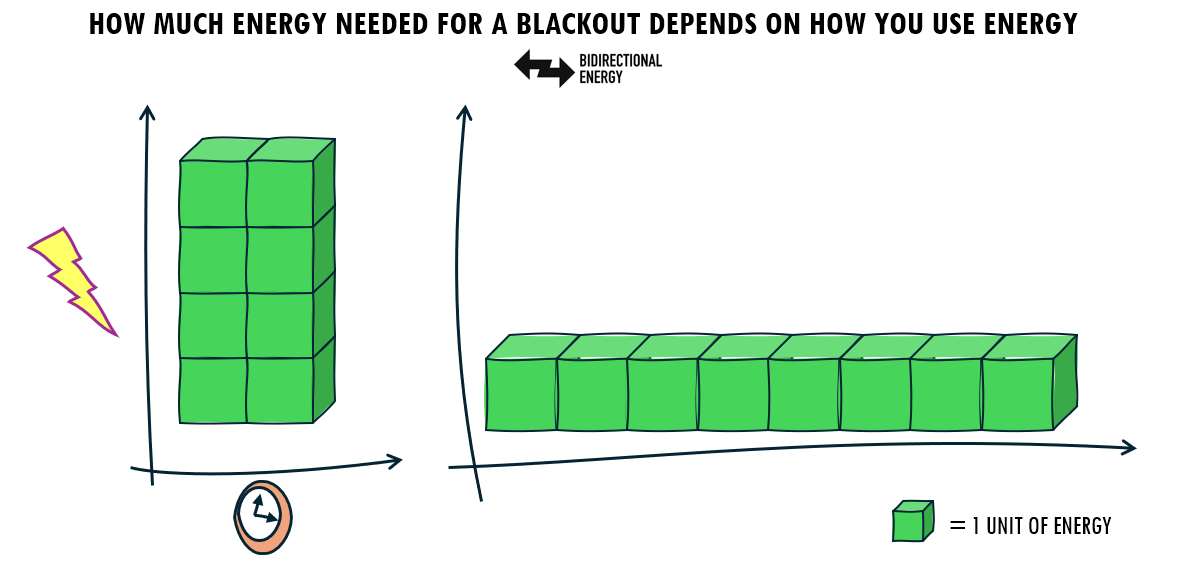If you know, you know: when a power outage strikes, we all go through the same motions. Maybe we stumble in the dark for candles or flashlights, or triple-check our phone batteries to see how much juice we’ve got left. But one thing we all do is try to plan ahead in an unfamiliar situation, asking ourselves questions like “Is the milk going to go bad?” or “Does my laptop battery have enough to meet my work deadline?” and maybe “should I invest in a home backup system?”.
Thankfully, there are a few ways to provide your home with power during an outage so that you don’t have to ask these questions. Each system has its own set of benefits and constraints. In this post, we'll explore different types of home backup systems, from generators to electric vehicles, to help you think through your decision.
“Home Backup” is an alternative means to provide electricity to your home when the main electricity supply - from the electric grid - is interrupted. Power can go out for any number of reasons, from local issues like a blown transformer on a nearby power pole to regional issues such as when high winds and fire risk force your electric utility to de-energize portions of the grid for safety reasons. No matter the cause of the outage, Home Backup turns your home into an “island” of electric power, capable of powering essential appliances and systems in your home until the grid comes online.
As with any kind of preparedness exercise, you should consider both the challenge and its dimensions, as well as the solutions to that challenge, or what you need to be sufficiently comfortable. When you leave the house for a walk, does your everyday carry include just your wallet, keys and phone, or does it also include snacks, a leatherman tool and a water bottle? Does your earthquake emergency kit have a few granola bars and water bottles or a filtration system and a store of heritage grains?
Thinking about Home Backup means a few key considerations:


There are three primary types of home backup systems - Backup Generators (or BUGs), Stationary Energy Storage (Batteries), or Electric Vehicles (EVs). We’ll cover each of them, and their own unique set of strengths and weaknesses, in this section. We’ve ignored comparing things like maintenance costs or fire risk for simplicity – each of these are machines that contain combustible fuel and can mechanically break.
BUGs are gas-powered generators that range in size and power output. They are no different technologically than an internal combustion engine in a car, but instead of turning a gearshaft, an electric current is generated. The technology is old enough to be very efficient, even though it still burns fuel and generates carbon emissions. Small enough to be portable and power key systems, some are big enough to power entire homes.
Batteries, not much different technologically from the disposable battery that powers a flashlight, are now available in a size that can power your whole home at a price that is growing more affordable. They can complement electrification technology like solar and EVs, or provide backup power using energy charged from the grid.
Modern EVs, in addition to being your vehicle, have the potential to serve as a backup power source for your home with V2H – or vehicle to home – technology. The same technology that allows you to pull energy from the grid, through your home, and into your car with a charger instead reverses the flow of energy, letting you power your home while your car is parked there.
Choosing the right home backup system depends on your specific needs, your budget, and priorities. Generators are cost-effective; batteries provide a silent and clean solution but come with a higher price tag and limited capacity. Electric vehicles offer a versatile and potentially powerful backup option, but require additional equipment and careful management of battery usage. Consider your individual circumstances to determine the best solution for your home.
And also, remember that your individual circumstances might change your Home Backup needs over time. For example, maybe you are okay with different solutions for different types of outages, like whole home backup for short outages but willing to scale back energy consumption for long haul blackouts. Or maybe you are only able to make one major investment in technology and you are willing to accept some shortcomings to your backup needs in order to get some of the solution.
Friendly Disclaimer: at Bidirectional Energy, we see a bright future for Electric Vehicles to provide many services, including but not limited to home backup. You can read more about our mission here, learn more about the interaction between energy and money here, or understand the opportunity to turn your car into a money making machine with V2G, here.
*An important note about lowering energy bills with an EV: by getting an electric vehicle and charging it at home, your energy bills will increase relative to before you brought home the EV. The extra electricity cost of recharging your car should net out with no longer having to buy gasoline (and could be further reduced with cheaper alternatives like rooftop solar), but it might still come as a surprise when you pay your utility bill the first time. When we highlight that an EV can be used with V2G and V2H to lower your electric bills, we are referring to your ‘I-now-own-an-EV’ electric bills, which even when lowered may still be higher than the before-times.